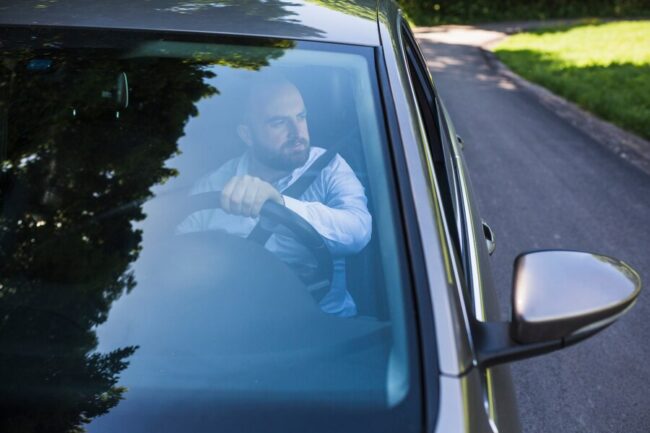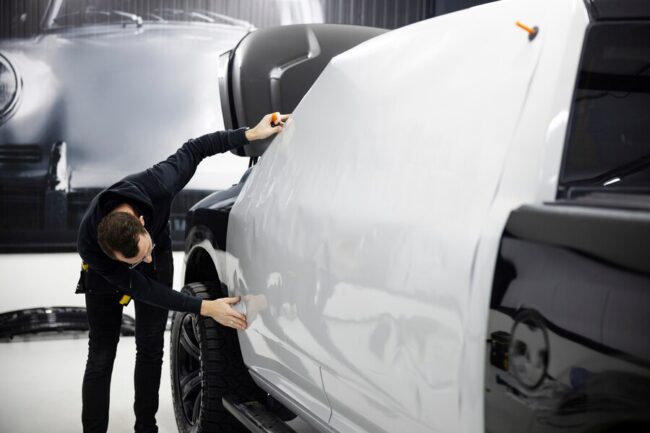In the world of automotive care, one often overlooked aspect is protecting your vehicle from the harmful effects of UV rays. While we’re well aware of the impact of UV rays on our skin, it’s equally crucial to understand how these rays can wreak havoc on your beloved car. This guide will delve into UV Protection 101 and explore how to shield your vehicle from the sun’s harmful rays.
Understanding UV Rays
UV rays are classified into three main types: UVA, UVB, and UVC. While UVC rays are absorbed mainly by the Earth’s atmosphere, UVA and UVB rays penetrate the atmosphere and can cause significant damage to your vehicle. These rays can lead to paint fading and discoloration, interior materials deterioration, and damage to electronic components. Understanding how these rays affect your vehicle is the first step in implementing effective UV protection measures.
Signs of UV Damage
As the sun’s UV rays relentlessly beat down on your vehicle, they can leave telltale signs of damage that, if ignored, may lead to more severe issues. Recognizing these signs early on is crucial for effective UV protection. Here are some common indicators of UV damage:
- Fading and Discoloration of Paint: One of the most noticeable effects of prolonged sun exposure is the fading and discoloration of your car’s paint. UV rays break down the chemical compounds in the paint, leading to a dull and weathered appearance.
- Cracking and Deterioration of Interior Materials: The sun’s rays penetrate your car’s windows, causing the interior materials to heat up and eventually crack or deteriorate. Dashboards, seats, and other interior components are particularly susceptible to this damage.
- Damage to Electronic Components: Modern vehicles have various electronic components, such as touchscreens, navigation systems, and entertainment units. Prolonged exposure to UV rays can damage these sensitive electronics, leading to malfunctions and costly repairs. Regularly inspecting these signs can help you address potential issues before they escalate.

The Role of UV Protection
Importance of Preventive Measures
Implementing UV protection measures is crucial for preventing the gradual deterioration of your vehicle caused by UV rays. This proactive approach safeguards your car’s aesthetic appeal and protects it from potential structural damage, ensuring long-term durability.
Benefits of UV Protection for Vehicles
UV protection goes beyond maintaining a glossy appearance. It preserves your car’s exterior color, prevents fading, and safeguards the interior from sun-induced damage. Beyond aesthetics, it contributes to a cooler interior, reducing the risk of heat-related issues and enhancing your overall driving experience. By investing in UV protection, you enhance your vehicle’s visual appeal and longevity, saving on potential future repairs and maintaining its value.
UV Protection Methods for Vehicles
Various methods prove effective when it comes to shielding your vehicle from the damaging effects of UV rays. Understanding these UV protection methods is crucial for preserving your car’s aesthetics and functionality.
Car Covers
Car covers are a frontline defense against UV rays, providing a physical barrier between your vehicle and the sun. There are different car covers, ranging from lightweight fabric options to heavy-duty, weather-resistant materials. Choosing the right cover for your vehicle involves considering factors such as climate, storage conditions, and frequency of use. A well-fitted car cover not only safeguards your paint from fading but also protects against other environmental elements.
Window Tinting
Window tinting serves as a dual-purpose solution, enhancing privacy while significantly reducing UV exposure to your vehicle’s interior. The benefits of window tinting extend beyond UV protection, including heat reduction and glare prevention. When contemplating window tinting, it’s essential to weigh the advantages of professional installation against the option of a do-it-yourself (DIY) approach. While professionals ensure precision and adherence to legal regulations, some DIY kits offer a cost-effective alternative for skilled individuals.
Protective Coatings
For a more permanent and advanced form of UV protection, consider protective coatings such as ceramic and paint sealants. Ceramic coatings create a durable, hydrophobic layer that not only shields against UV rays but also repels water, dirt, and contaminants. Paint sealants, on the other hand, provide a protective barrier against environmental factors, including UV exposure. Choosing between ceramic coatings and paint sealants often depends on factors like budget, desired longevity, and the level of protection your vehicle needs.
DIY UV Protection Tips
When it comes to safeguarding your vehicle from the sun’s relentless UV rays, incorporating some do-it-yourself (DIY) practices can make a significant difference.
- Regular Cleaning and Maintenance
- Washing and Waxing: Regularly washing and waxing your car not only keeps it looking shiny and new but also creates a protective barrier against UV rays. Wax acts as a shield, preventing the sun from penetrating the paint and causing fading or discoloration.
- Interior Cleaning: UV rays can be equally harsh on your car’s interior. Regularly cleaning and conditioning the interior surfaces, including the dashboard and seats, can prevent cracking, fading, and deterioration.
- Parking Strategies
- Shaded Parking: Whenever possible, opt for shaded parking spaces. Parking your vehicle in the shade reduces the direct exposure to UV rays, minimizing the risk of paint damage and interior wear over time.
- Use of Sunshades: Utilizing sunshades for your windshield and side windows is an effective way to block out a significant portion of UV rays. This simple accessory helps maintain a cooler interior and protects your dashboard and upholstery from the sun’s harmful effects.
By integrating these DIY UV protection tips into your routine, you actively contribute to preserving your vehicle’s aesthetic appeal and overall longevity.
 Best Practices for UV Protection
Best Practices for UV Protection
Implementing best practices for UV protection is essential for maintaining the longevity and aesthetic appeal of your vehicle.
Consistent Care Routine
Establishing a regular care routine is the foundation of effective UV protection. Regular cleaning and maintenance, including washing and waxing, help remove accumulated dirt and provide a protective layer against UV rays. This routine not only enhances the visual appeal of your vehicle but also contributes to the overall health of its exterior surfaces.
Seasonal Adjustments for Higher UV Exposure
Recognizing that UV exposure varies with the seasons, it’s crucial to make adjustments to your care routine accordingly. During summer or in regions with intense sunlight, consider increasing the frequency of cleaning and waxing. This proactive approach helps counteract the heightened impact of UV rays during periods of higher exposure, preserving your vehicle’s appearance and structural integrity.
Regular Inspection for Signs of Damage
Frequent inspections are key to identifying and addressing potential UV damage promptly. Look out for signs such as paint fading, interior discoloration, and cracks in materials. Early detection allows for timely intervention, preventing further deterioration and ensuring that your vehicle remains resilient against the detrimental effects of UV rays. Regular inspections should be a part of your overall maintenance strategy, providing a proactive defense against UV-related issues.
UV Protection Products on the Market
Navigating the array of UV protection products is crucial for effective vehicle care.
- Car Covers: Acting as a physical barrier, car covers come in various materials, safeguarding both the exterior paint and interior components from the damaging effects of UV rays. Choosing the right cover, tailored to your storage conditions, is essential for optimal protection.
- Window Tints: Beyond enhancing privacy and reducing glare, professionally installed window tints provide an additional layer of defense against UV rays. Available in various shading levels, window tints contribute to a cooler interior while offering customizable protection for your vehicle.
- Protective Coatings: Ceramic coatings and paint sealants are advanced options for comprehensive UV protection. These coatings create a durable layer over the vehicle, guarding against UV rays, contaminants, and oxidation. Choosing between ceramic coatings and paint sealants depends on factors like application ease and specific vehicle needs, making them valuable investments for long-term UV defense.
FAQs on UV Protection for Vehicles
When it comes to protecting your vehicle from UV rays, it’s common for owners to have questions and misconceptions. Here are some frequently asked questions along with expert advice to help you navigate the realm of UV protection:
Common questions and misconceptions:
- Do all car covers offer the same UV protection?
- Can window tinting alone protect the interior from UV damage?
- Is UV damage exclusive to the vehicle’s exterior?
Expert advice on UV protection:
- Prioritize quality: Invest in reputable UV protection products for long-term effectiveness.
- Maintain regularly: Consistent cleaning, waxing, and protective coatings preserve your vehicle.
- Consider professional installation: For complex measures like window tinting, professional installation ensures optimal results.
In conclusion, UV protection is not just an optional luxury for vehicle owners; it’s a necessity. By understanding the impact of UV rays, recognizing signs of damage, and implementing effective protection methods, you can ensure the longevity and aesthetic appeal of your vehicle. Whether through car covers, window tinting, protective coatings, or simple DIY tips, there’s a UV protection strategy for every vehicle owner. Don’t let the sun’s rays compromise your prized possession – take proactive steps to shield your vehicle from harm. Your car will thank you with years of reliable and visually appealing performance.




